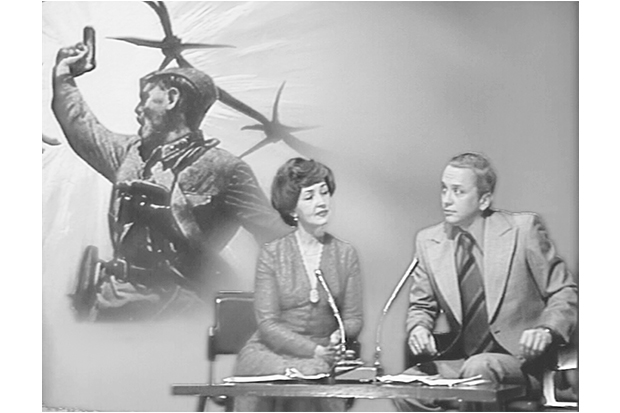In the opening chapter of her history of Soviet Central Television, Christine E. Evans observes two Russian televisual displays of 2014. February saw the opening ceremony of the Sochi Winter Olympics — which sought to depict a millennium of national history using glitter and gameshow grandiosity. April brought the stern, but no less theatrical, Direct Line with Vladimir Putin — an annual phone-in — during which the president celebrated Crimea’s annexation with an orgy of televisual patriotism. Although more glitzy than their Soviet-era equivalents, both can be seen as displays of continuity in Russian broadcasting, rather than incidences of invention. As Evans explains:
The highly televisual Putin era represents the culmination of a long Soviet — now Russian — ‘era of television’. This era began in the late 1950s, when television arrived as a mass medium, found its enduring forms in the second half of the 1960s, and realised its multiple, contradictory visions in the decades that followed. The chief feature of this era was a persistent search for new ways of unifying a diverse public, legitimising authority, and performing the state’s responsiveness to its citizens — all without recourse to either shared belief in a single ideology or to genuinely competitive elections.
In the aftermath of Stalin’s death in 1953 — and the thaw which accompanied Nikita Khrushchev’s denunciation of the late Soviet leader — Central Television embarked on a flurry of creativity. Well aware of light entertainment’s ‘ostensibly pathological commercial role in the capitalist West’, TV pioneers sought to create programming that had a Soviet value system. As Evans explains,
Central Television’s ambitious workers remained committed to the view that, in their hands, television was high-status, masculine, experimental transformative culture that addressed the state’s most pressing political and economic concerns.
A divergent Soviet TV schedule emerged where ‘foreign news was high status, as in the West, [but] so were gameshows, a genre near the bottom of prestige hierarchies in the capitalist world’.








Comments
Join the debate for just £1 a month
Be part of the conversation with other Spectator readers by getting your first three months for £3.
UNLOCK ACCESS Just £1 a monthAlready a subscriber? Log in